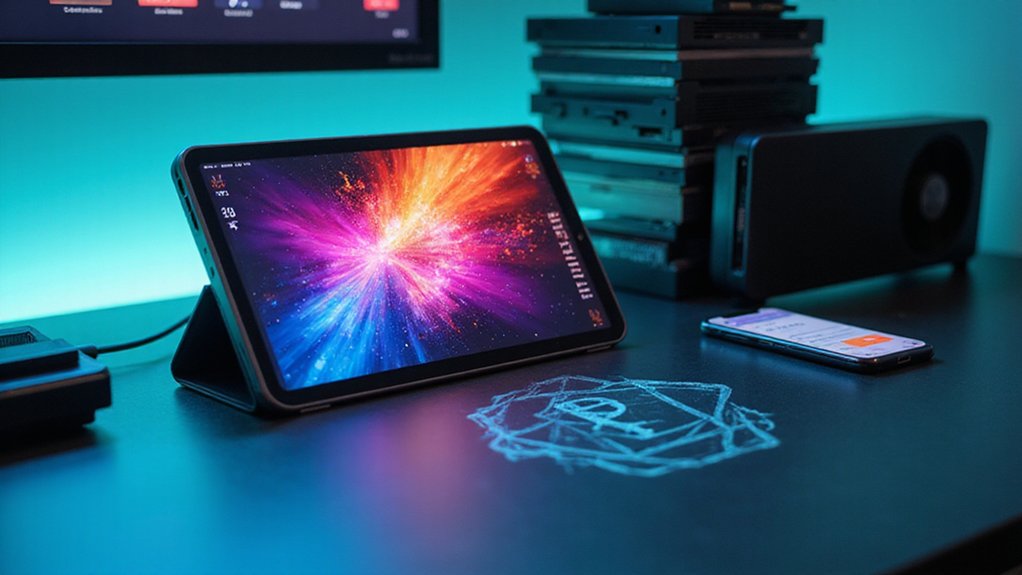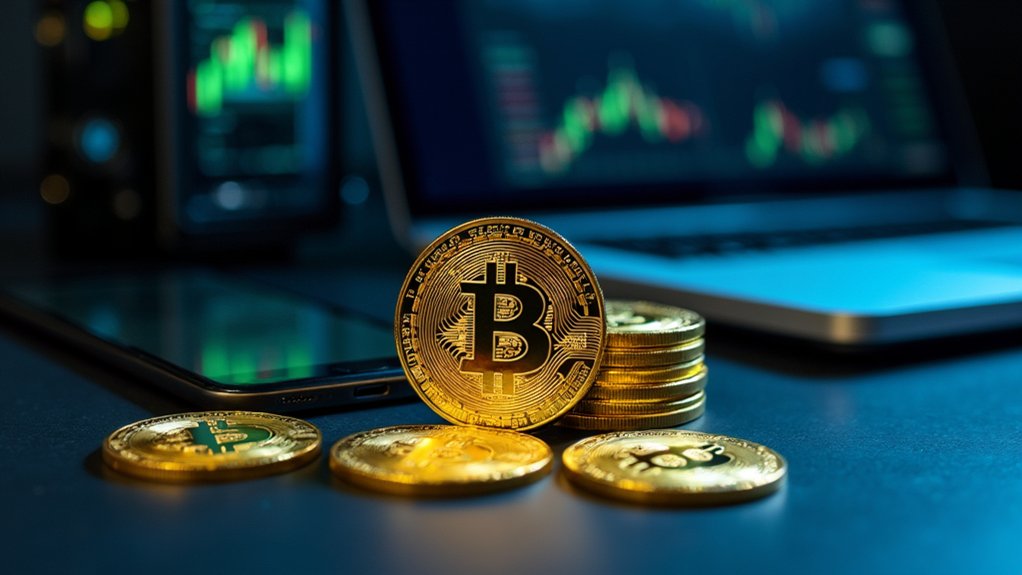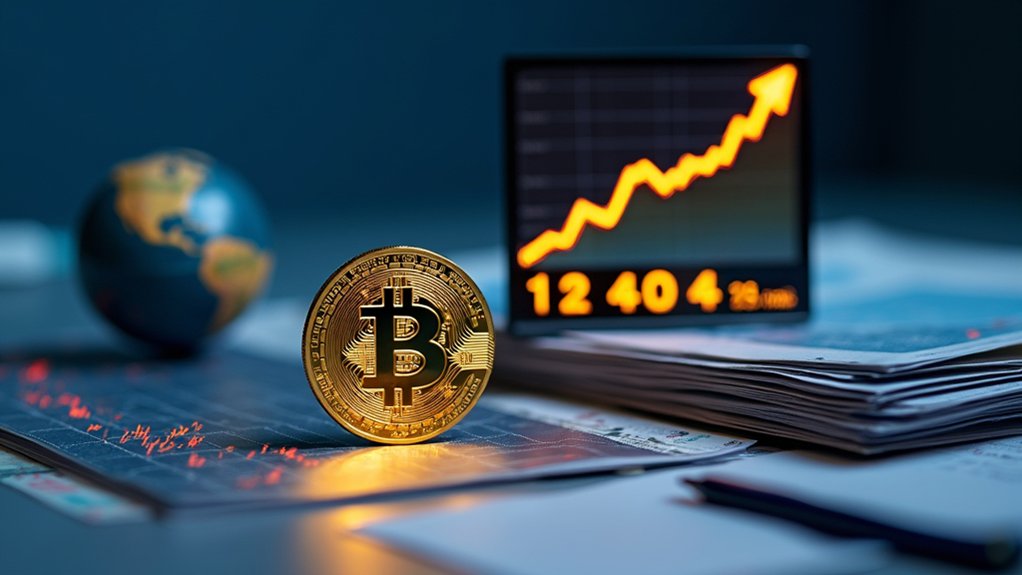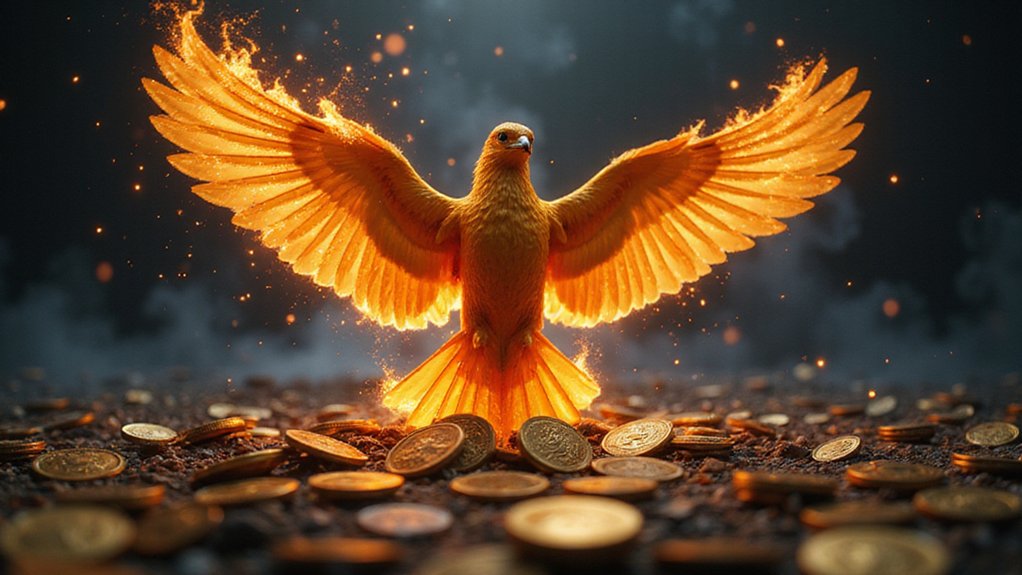Creating an NFT requires five essential steps: verify your digital artwork’s originality, select a blockchain network (Ethereum dominates, though alternatives like Polygon offer lower fees), establish a cryptocurrency wallet (MetaMask remains the standard), connect to a marketplace like OpenSea, and mint your creation through their interface—paying the requisite “gas fees” for blockchain verification. The process transforms infinitely replicable digital files into verifiably scarce assets with immutable ownership records, a paradoxical alchemy that continues to reconfigure value propositions across creative industries.

Why has the once-obscure concept of non-fungible tokens evolved from crypto-enthusiast curiosity to mainstream financial phenomenon?
The meteoric rise of NFTs reflects their revolutionary power to authenticate digital ownership in an otherwise infinitely reproducible realm.
The answer lies in their unique capacity to transform digital creations—otherwise infinitely replicable—into verifiably scarce assets with provable ownership, a development that has reconfigured value propositions across digital landscapes.
The journey toward creating an NFT begins with the digital artwork itself.
Artists must verify their creations—be they illustrations, animations, music, or other media—are not only original but also unencumbered by copyright restrictions.
This preparatory phase requires careful attention to metadata inclusion, as these descriptive elements enhance both discoverability and perceived value in increasingly saturated marketplaces.
Unlike traditional cryptocurrencies, NFTs represent unique digital identifiers that cannot be exchanged on a one-to-one basis.
Selecting an appropriate blockchain represents a critical inflection point in the minting process.
While Ethereum remains the dominant protocol (despite its notorious gas fees), alternatives like Polygon and Flow offer compelling advantages in transaction speeds and environmental impact.
Considerations that increasingly influence collector sentiment include these factors.
One must weigh these technical characteristics against marketplace adoption and token standard compatibility.
The establishment of a cryptocurrency wallet—the digital equivalent of both bank account and signature—constitutes an essential preliminary step.
Wallets like MetaMask not only store digital assets but also facilitate the transaction approvals necessary for minting operations.
The imperative of securing private keys cannot be overstated; their loss renders assets irretrievably inaccessible.
These wallets essentially encrypt NFTs for secure storage and trading on compatible blockchains.
NFT marketplaces offer varying degrees of accessibility, with platforms like OpenSea providing relatively straightforward minting interfaces.
The process requires no coding knowledge to create and publish NFTs onto the blockchain.
These marketplaces differ substantially in fee structures, listing options, and audience demographics.
Variables that can greatly impact an NFT’s commercial prospects include these factors.
The minting process itself transforms the digital file into a blockchain asset through a transaction requiring cryptocurrency payment.
Once completed, the NFT exists as an immutable record, though limited metadata modifications may remain possible.
Post-minting management involves collection presentation optimization and strategic promotional efforts.
Endeavors that, when executed thoughtfully, can elevate a digital curiosity into a legitimate digital asset.
Frequently Asked Questions
Do I Need Programming Skills to Create an NFT?
While programming skills aren’t strictly necessary for NFT creation (as numerous no-code platforms exist), technical proficiency greatly expands one’s capabilities in this space.
For sophisticated projects—particularly those requiring custom smart contracts—knowledge of Solidity, Web3.js, or Rust becomes invaluable.
Many creators successfully navigate the NFT landscape by partnering with developers or utilizing user-friendly marketplaces that abstract away the underlying complexity, though such convenience invariably comes with creative and financial limitations.
How Much Does It Cost to Mint an NFT?
The cost of minting an NFT ranges dramatically—from mere pennies to thousands of dollars, depending on one’s chosen blockchain ecosystem.
Ethereum, the belle of the crypto ball, commands premium gas fees ($0.38-$0.46 typically, though surging to eye-watering four-figure sums during congestion).
Budget-conscious creators might gravitate toward Solana or Polygon, while the truly cost-averse can leverage “lazy minting” options, effectively transferring minting costs to eventual buyers—a rather elegant solution to the entry barrier problem.
Can I Sell My NFT on Multiple Marketplaces?
Technically, NFT creators can sell their digital assets across multiple marketplaces, though this practice demands careful consideration.
While platforms like NFTGo facilitate cross-marketplace listings, the savvy artist generally avoids simultaneous multi-platform sales—a practice that potentially undermines scarcity value and collector trust.
The consensus among successful creators? Establish presence on a primary platform initially, maintain price consistency if expanding, and prioritize reputation management.
After all, in the peculiar economics of digital scarcity, perceived exclusivity remains paramount to value retention.
What File Formats Work Best for NFT Art?
PNG files reign supreme in the NFT landscape, offering transparency and lossless compression—critical factors for preserving artistic integrity in the sometimes bewildering digital asset marketplace.
For creators venturing into dimensional worlds, GLB format stands as the gold standard for 3D NFTs, providing animation capabilities with impressively compact file sizes.
GIFs, while serviceable for simple animations, generally lack the sophisticated rendering capabilities that serious collectors (who, remarkably, continue spending fortunes on digital tokens) typically demand.
Are There Copyright Concerns When Creating NFTS?
Creating NFTs indeed presents significant copyright landmines.
Minting someone else’s work—whether brazenly or unwittingly—constitutes infringement, regardless of blockchain’s pseudonymous veneer.
The creator must either own the underlying work or secure proper licensing rights (a step many seem to regard as optional, much to rights holders’ chagrin).
While blockchain may complicate enforcement, it doesn’t negate liability—a distinction lost on many would-be NFT entrepreneurs maneuvering this digital Wild West.









